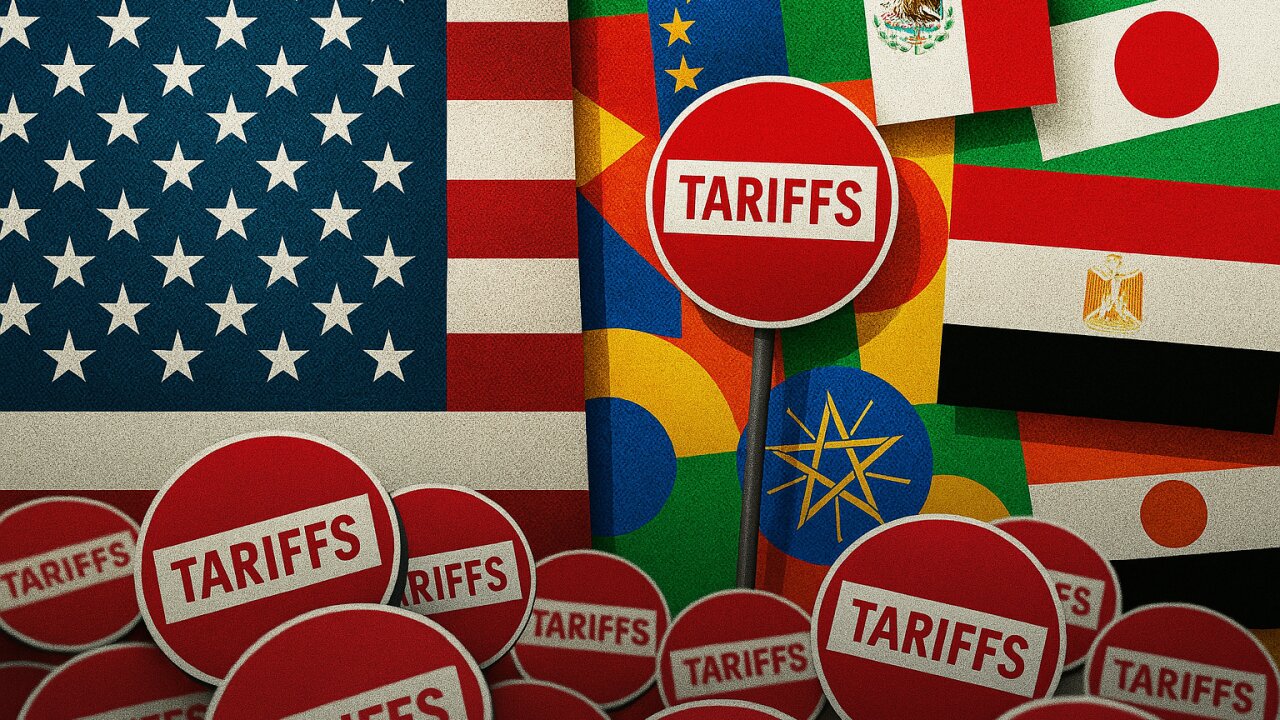View News
Recent-US-Tariffs-Their-Impact-on-Asia-and-Global-Trade

Recent U.S. Tariffs: Their Impact on Asia and Global Trade
~ Sura Anjana Srimayi
The imposition of recent tariffs by the Trump administration has sent shockwaves through global trade systems, deeply affecting international economic relations, particularly in the Asia-Pacific region. These measures, aimed at rebalancing the U.S. trade equation, are not just economic tools but also raise serious legal and geopolitical questions. This article delves into the nature of these tariffs, their far-reaching consequences, and the broader implications for global trade dynamics.
The Landscape of Trump's Tariffs
The Trump administration introduced a significant shift in U.S. trade policy through the strategy of “reciprocal tariffs”— a departure from the decades-long U.S. commitment to free trade and multilateralism. Key elements of this policy include:
1. Widespread Application
Rather than targeting individual nations, the U.S. imposed broad-based tariffs on multiple countries, including many major Asian economies. The rationale was to curb the U.S. trade deficit by levying tariffs roughly proportional to the trade imbalances with each country.
2. High Tariff Rates
Certain Asian countries have faced steep tariffs. For example, Vietnamese textile and electronics exports, central to its economy, were slapped with high duties, causing major disruption to exporters and investors alike.
3. Focus on Trade Deficits
The policy is based on the presumption that trade deficits are inherently detrimental to the U.S. economy — a contested view among economists. The administration aimed to correct these imbalances through protectionist trade measures.
Impact on the Asian Region
Asia, as a hub of export-led growth and integrated supply chains, has been particularly vulnerable to these policy changes. The ripple effects are being felt across industries and borders:
1. Disruption of Global Supply Chains
From semiconductors to automotive parts, many Asian economies are embedded in cross-border production networks. Tariffs increase input costs, delay manufacturing processes, and force companies to reconsider sourcing and manufacturing decisions.
2. Decline in Trade Volumes
Tariffs have led to decreased U.S. imports from countries like China, Vietnam, and South Korea. For export-reliant nations, this has contributed to lower GDP growth, factory shutdowns, and increased unemployment.
3. Escalation of Regional Tensions
The U.S.–China tariff exchanges escalated into a trade war, spurring retaliatory measures. This tit-for-tat has introduced volatility in diplomatic ties, investment flows, and global economic cooperation.
4. Stock Market and Currency Instability
Markets across Asia — including those in India, Japan, South Korea, and China — experienced sharp declines amid the tariff battles. Currencies weakened, foreign investment slowed, and inflationary pressures rose due to costlier imports.
Legal Implications
The legality of the Trump tariffs has sparked debate on both domestic and international fronts:
1. WTO Challenges
Many nations have accused the U.S. of violating World Trade Organization (WTO) rules that prohibit arbitrary or discriminatory trade measures. Multiple cases have been filed at the WTO, although dispute resolution remains slow.
2. Presidential Overreach?
U.S. legal experts have questioned whether the administration exceeded its authority under trade statutes like the Trade Expansion Act of 1962 or International Emergency Economic Powers Act (IEEPA). Several lawsuits have been filed domestically by U.S. companies and trade associations.
3. Undermining Multilateral Trade Agreements
By bypassing multilateral frameworks in favor of bilateralism and unilateral actions, the U.S. has weakened trust in existing international trade agreements. This undermines predictability and the rule-based trading system.
4. Global Repercussions and Inflation
As nations respond with their own tariff hikes, the world risks entering a tariff spiral. Higher import costs feed into consumer inflation globally — affecting prices of everything from smartphones to agricultural goods.
Responses from Asian Countries
Asian nations have adopted a range of strategies to mitigate the adverse effects of U.S. tariffs:
1. Bilateral Negotiations
Countries like Japan and South Korea have pursued targeted negotiations with the U.S., offering concessions or alternative terms in exchange for tariff relief.
2. Retaliatory Measures
China, in particular, responded aggressively — imposing tariffs on key American exports like soybeans, aircraft, and automobiles. This retaliation further strained global trade balances.
3. Market Diversification
To reduce dependence on the U.S., many Asian nations are turning to regional trade blocs like the Regional Comprehensive Economic Partnership (RCEP) and expanding partnerships with the EU, Africa, and Latin America.
Conclusion
The Trump-era tariffs have marked a turning point in global trade policy, replacing cooperation with confrontation. For Asia, these measures have brought disruptions in supply chains, economic instability, and strategic realignments. As trade tensions continue to play out in courtrooms, trade negotiations, and boardrooms, the world watches to see whether a new balance can be struck — one that respects both national interests and global economic stability.

